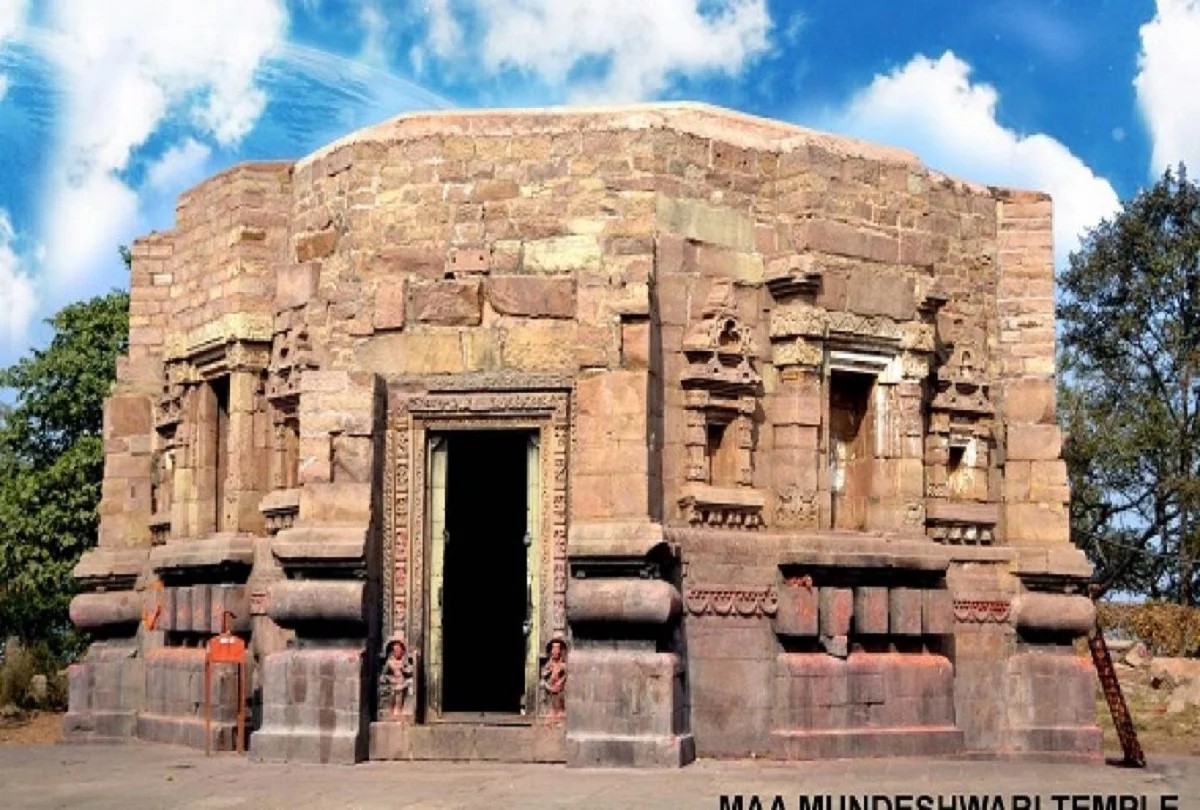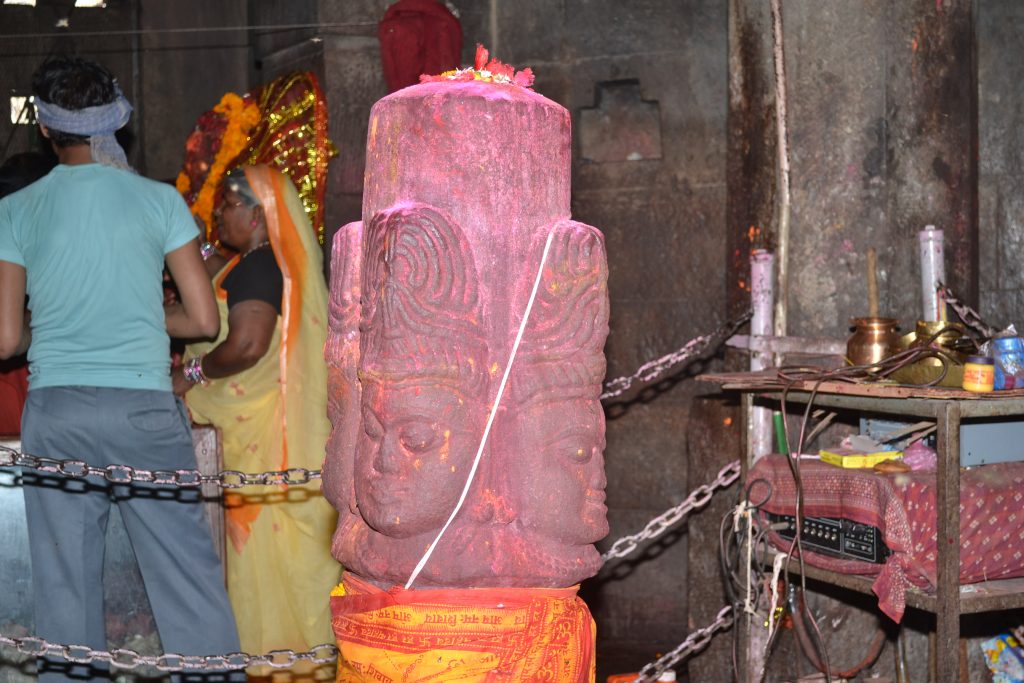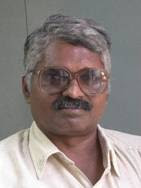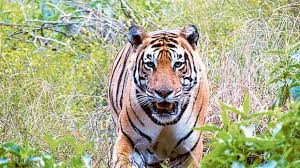Oldest Living Hindu Temple in the World (Maa Mundeshwari Temple, Kaimar, Bihar)
Our Correspondent 4 july 2023


India is the land of Hindu Temples. There are numerous important and magnificent temples. Have you ever wondered when Hindus started constructing temples and which is the oldest Hindu Temple in India? Here are the answers.
We really do not know when and where the first Hindu Temples were built. There were no Hindu Temples during the early Vedic times (BCE 1500 – 500 BCE). The earliest Hindu Temples were constructed during the later Vedic period – around 2500 years ago.
But these early rudimentary structures were made of leaves, wood, mud and other perishable material and have since disappeared. The temple makers graduated to cave temples; and then to structures made of stones, rocks and bricks.
Though the exact dates differ, Maa Mundeshwari Temple located at Kaura in Kaimur District of Bihar is considered the 'Oldest Functional' temple of the world as rituals have been performed here without a break.
Mythology
The district of Kaimur formed part of the mighty Magadh Empire from 6th century BCE to 5th century CE, under the Mauryan and Gupta rulers of Magadh. Chandra Gupta Maurya raised an army, with the assistance of Chanakya, his teacher and author of Arthashastra and overthrew the Nanda Empire in 322 BCE laying the foundation for the Maurya Empire. Chandragupta rapidly expanded his power westwards across central and western India. In the 7th century CE, this district came under the control of Harshawardhan, the ruler of Kannouj.
Narayana or Vishnu
According to the official version of the Temple authorities, the Maa Mundeshwari Temple was built during 3 - 4 BCE with Narayana, or Vishnu, as the presiding deity. During 348 CE, a new deity Viniteswara was set up as a minor deity in the temple, holding a position subsidiary to Narayana, the main deity. The statue of Narayana disappeared due to the ravages of time.
Chatur Mukha Lingam or Four Faced Shivalinga
Around the seventh century CE, Shaivaism (Religion based on Lord Shiva) became the prevalent religion; and Viniteswara, which was a minor deity, emerged as the presiding deity of the temple. The Chatur Mukha Lingam (Lingam with four faces) representing Lord Shiva was accorded the central place
in the temple, which it holds even now.
After this period, the Cheros, a powerful aboriginal tribe and the original inhabitants of the Kaimur Hills, ascended to power. The Cheros were worshippers of Shakti, represented by Maa Mundeshwari, also known as Maheshamardini and Durga. They made Maa Mundeshwari the main deity of the temple. But in this temple, Maa Mundeshwari is depicted riding on a buffalo. This is unique because Durga is generally represented as killing the ‘asura’ (demon) in the form of a buffalo. However, Chatur Mukha Lingam (Lingam with four faces) still occupied the centre stage in the temple.
The image of Maa Mundeshwari or Durga was installed in a niche along one wall of the temple, where it resides to this day. It is worshipped as the main deity while the Chatur Mukha Lingam although in a central position remains the subsidiary deity.
Who constructed the Temple
It appears that Maharaja Dutthagamani (101-77 BC), a powerful independent king of Ceylon (Sri Lanka), had constructed a great stupa and a large assembly of priests attended its consecration ceremony in the Mundeshwari hills. The exact builder of the Maa Mundeshwari Temple is not known. It is believed to have been built during the Gupta dynasty, between the 4th to the 6th century CE.
The temple's architectural style and sculptures, which are influenced by the Gupta style, suggest that it was built during this period. The Gupta dynasty was known for its patronage of arts, literature, and architecture, and several notable temples and monuments were built during their reign. This unique temple is a remarkable example of ancient Indian architecture, combining elements of different styles to create a unique and harmonious structure. It is a testament to the architectural and cultural achievements of the Gupta dynasty.
Architecture
The Maa Mundeshwari Temple is the earliest specimen of the Nagara style of temple architecture in Bihar. It is a mix of different styles, including the Gupta and the Nagara styles and is an architectural marvel.
The Temple is built of stone on an octagonal plan which is rare. Since 1915, the temple is a protected monument under the Archaeological Survey of India. The temple shikhar or tower which had been destroyed has been covered with a roof.
The temple complex comprises a main shrine and several smaller shrines surrounded by a large courtyard. The main shrine is a square shaped building with a pyramid-like roof, which is a distinctive feature of the Nagara style. The walls of the temple are adorned with intricate carvings and sculptures, depicting various Hindu gods and goddesses.
The main deities in the sanctum sanctorum of the temple are the Maa
Mundeshwari and Chaturmukh Mukhalingam (Lingam with four faces). Even though the Chaturmukh Mukhalingam is installed in the centre of the sanctum, the main presiding deity is Maa Mundeshwari deified inside a niche. She is depicted with ten hands holding symbols and riding a buffalo, attributed to Mahishasura-mardini.
There are four entrances to the temple, of which one has been closed and one is half open. There are doors or windows on four sides and small niches for the reception of statues in the remaining four walls. The niches on the four interior walls have bold mouldings which are carved with vase and foliage designs. At the entrance to the temple, the door jambs are seen with carved images of Dwarapalas, Ganga, Yamuna and many other deities.
There are also two stone vessels of unusual design. The temple also has statues of Ganesha, Surya, Vishnu and of other popular Gods. A substantial part of this stone structure has been damaged.
Chaturmukh Mukhalingam (Lingam with four faces) has been constructed with a special stone which changes its color with the position of the sun. There is a large statue of Nandi on the west side of the main entrance. The Maa Mundeshwari Temple is a remarkable example of ancient Indian architecture, combining elements of different styles to create a unique and harmonious structure.
Location
Maa Mundeshwari Temple is built on top of Pawanra (original Prawara) Hill, at a height of about 608 feet (185 metres). The inscription of an information plaque erected by the Archaeological Survey of India (ASI) at the site indicates the dating of the temple to 635 CE. However, there are other versions for the dating stating the Saka era, prior to Gupta dynasty rule (320 CE) in India, and specifically to 105 CE according to the Administrator of the Bihar Religious Trust Board.
Worship
It is believed that rituals and worship have been performed in this temple continuously without a break. Hence Maa Mundeshwari Temple is considered the oldest functional Hindu Temple in the world.
The temple is visited by a large number of pilgrims each year, particularly during the Ramnavami and Shivaratri festivals. A big annual fair (mela) is held nearby during the Navaratra visited by thousands. The worship of Shakti in the form of Maa Mundeshwari in the temple is also indicative of tantric cult of worship, which is practiced in Eastern India.
Unique Goat Sacrifice
An amazing aspect of worship here is the bloodless goat sacrifice performed,
something which would please the animal lovers. Worshippers come here and pray for fulfillment of their desires. After fulfillment of their desires, the worshippers bring goats for sacrifice. Amidst chanting of mantras and showering of flowers and sacred rice by the priest, the goats fall unconscious. But they regain consciousness as soon as the priest repeats the process and the sacrifice is completed thereby. According to the local residents, the tradition of sacrificing goat in this temple has been there since the beginning, but here the sacrifice is done in a very unique way in which not even a drop of blood flows. This unique sacrifice adds to the divinity surrounding the deity.
Legend says that the mother killed a demon named Chand. But the demon named Mund came and hid on the hill. Searching for him, the mother came to this hill and killed Mund. That is why this temple is also called 'Mundeshwari Mata Mandir'.
Apart from this unique sacrifice of goat in Maa Mundeshwari Devi Temple, a unique sacrifice is made to Goddess Ganga at Pahleja Ghat near Hajipur. After the wishes of the devotees are fulfilled, they reach the ghat and buy goats from the boatmen. After worshiping them, they offer them to Ganga Maiya. They let the goats swim away. In this way, the sacrificed goats are not killed. Devotees offer this sacrifice after the fulfillment of their wish to have a child or on the fulfillment of any other special vow. This tradition of sacrifice conveys the message that the gods and goddesses are not pleased by the sacrifice of any living animal. Rather, they are happy by worshiping nature and filling their bags with wishes.
Museum
There is a small museum halfway up the hill on a small peak by itself. This new museum is a small island of learning. It has one big hall and an additional smaller room. The big hall has a collection of statues and rock carvings mostly dating to the 6th and 7th centuries CE. It contains figures of religious significance drawn through the ages. The sculptures are well labeled but need more exhaustive descriptions explaining the significance of the exhibits. The smaller room has a large number of photographs of the rock paintings of the stone age period found in and around Karar village in the Kaimur Hills.
Accomodation
There are plenty of accommodation close by catering to all kinds of tourists.
Reaching there
Maa Mundeshwari temple is located 22 kms from the small town of Bhabhua, 120 kms from Varanasi and 175 kms from Patna in Bihar. It is about 10 km south of Bhabua and about 25 km south of the railway station. If someone wants to visit the temple, he should come to Bhabua Road station first then he may take a direct bus to Mundeshwari Devi temple or may first take bus to Bhabua and then an auto/tempo to the temple.
By Air
The nearest airport is the Lal Bahadur Shastri International Airport, Varanasi, 102 kms from the temple.
By Train
Mohania is the only major railway junction of the district. This station is commonly known as Bhabua Road is on the Howrah-New Delhi route. The temple is 22 kms. from this station.
By Road
The temple is 220 kms from Patna and 110 kms from Varanasi.
Hitech – online Prasad
The temple authorities have developed an attractive, remarkable website. It contains a lot of information, pictures and videos, bhajans, etc. and you can even order Prasad online which will be delivered to your home.
https://maamundeshwaritrust.org/
Incredible India Poised to become World's Tourist Hub
Our Correspondent 3 Aug 2017

“The one land that all men desire to see and having seen once, by even a glimpse, would not give the glimpse for all the shows of all the rest of the globe combined”: Mark Twain on India. The usage 'incredible India' brings to mind a plethora of unique images--ranging from the snow-capped mountains of Himalayas in the north, unsparing expanses of deserts of the west, tropical rainforests and exotic flora of the east and panoramic lakes, beaches and monsoon rains of the south; besides this, a range of historic, cultural and heritage sites, the torch bearers of the diversity of a country which boasts of centuries-old legacy.
This mixed bag of experiences makes India 'incredible' and a paradise which is much sought after by global tourists. While many other countries offer one or other monolithic experience of holidaying for a tourist, India opens the portals to diversified experiences of climate, geography, culture, art, literature, ethnicity and food.
And the government's various plans to market our incredible legacy, heritage and nature seems to have achieved its results. The increased footfall of foreign tourists and revenue growth in terms of Foreign Exchange Earnings (FEEs) is a clear proof for that.
An inclusive and sustainable growth of economy and revenue, employment generation, foreign investment and fostering of cultural ties are some of the objectives the government is targeting to achieve through its new tourism policies and programmes.
The Evolution of Tourism in India:.
India has been an attraction for foreign travelers, tourists and traders since centuries ago. The sub-continent’s constant contact with other countries, civilisations and people are very much evident in our cultural diversity indicators including language, customs, festivities, music, dance, art and so on.
However, the tourism sector did not get much attention in the initial years after Independence as tourism those days could not be perceived as a huge revenue earning industry.
One of the first significant episodes in the history of Indian tourism was the formation of the Indian Tourism Development Corporation (ITDC), in 1966. The core objective for its establishment was to develop tourist infrastructure and services. Similar organizations were set up in the states also.
The tourism activities and policy initiatives in the sector got a real momentum in the country after 1980s. It was in 1982, thirty five years after independence, that a National Policy on Tourism was announced in India for the first time. The country’s plans of hosting Asian Games in this year and the prospective arrival and accommodation and entertainment of large number of people from outside had triggered serious debates on tourism in the country. This general interest and debates on tourism had been translated into the first National Policy on Tourism which provided an action plan for the development of the sector.
India’s changed global image- from a land of slums and poverty to a developing country and emerging economic super power- accelerated the inflow of foreign tourists to the country in the later decades.
During NDA’s first term, the Government of India came out with a new Tourism Policy in 2002 with the objective of “positioning tourism as a major engine of economic growth and to harness its direct and multiplier effects for employment and poverty eradication in an environmentally sustainable manner.
The Incredible India: .
The soul of ‘incredible India’ lies in its unity in diversity. India offers variety of experience to travelers at one go as each part of the country gives them identifiable difference from the rest of the nation.
The northern part of the country may offer them mountain experience to the core from gigantic peaks to snow-covered valleys while the sprawling coastlines of the south may give a breathtaking contrast experience of beaches, lakes and riversides.
The Andaman and Nicobar islands or the Lakshadweep archipelago offer a unique experience of marine life and pristine beauty of islands. Participation in ‘Kumbha mela’, one of the largest religious gatherings in the world, may give a rare glimpse and first-hand experience on the centuries-old religious tradition of the country.
Annual literary festivals, held across the length and breadth of the country, offer a clear picture of the art and literary tradition.
Thus, exotic destinations, rustic country sides, vibrant festivities, harmonious co-existence of different faiths, colourful attires and ethnic cuisines make India a wondrous land for a global holidayer.
New policies and programmes: .
The experience of diversity, economical holiday destinations, special brand images of places and private and foreign investments have also contributed to the growth of tourist inflow from other countries into India.
The introduction of ‘Niche Tourism Products’ to expand and diversify the tourism prospects and make the country a 365 days destination has given an impetus to the increased inflow. Eco & Wildlife Tourism, MICE Tourism (MICE – Meetings, Incentives, Conferences and Events), Sustainable Tourism, Cruise Tourism, Golf Tourism, Polo Tourism, Medical Tourism and Wellness Tourism are some among such niche products.
The introduction of ‘Visa on Arrival’ (VoA) and ‘e-Tourist Visa’ have also accelerated the Foreign Tourist Arrivals (FTAs). According to official figures, the number of FTAs in May, 2017 was 6.30 lakh as compared to FTAs of 5.27 lakh in May, 2016 and 5.09 lakh in May, 2015. The Foreign Exchange Earnings (FEEs) during the period January- May 2017 were Rs. 74,008 crore with a growth of 19.2%.
The government's focus on new areas like spiritual tourism and pilgrimage tourism is also expected to tap the potential of the sector further and increase the inflow of visitors. The Government has also launched the scheme Swadesh Darshan with a view to develop circuits having tourist potential in a planned and prioritized manner. Swadesh Darshan aims at promoting cultural and heritage values of the country.
With the increasing clout of the country as it is poised to become an economic superpower of the world, it is hoped that India is visited by more and more people in the years to come.
Tiger Tourism to Boost Tourist inflow
Our Correspondent 27 Feb. 2016

Tiger tourism in Madhya Pradesh will get a boost this year.
To spread awareness about national animal, Indian Railways will offer complete packages including train journey, safaris and accommodation to cover the wildlife circuit comprising Kanha, Pench and Bandhavgarh tiger reserves.
Railway minister Suresh Prabhu while presenting the Railway Budget 2016-17 in Parliament on Thursday said tourism holds great potential for economic development and job creation.
Indian Railways will be partnering with the state governments for operating tourist circuit trains and explore the possibility of a revenue sharing model.
"Promotion of tourism through Railway museums and UNESCO world heritage Railways will be our special focus." he said.
Railway minister also said that India's rich bio diversity and wildlife is one of the mainstays of Incredible India campaign.
However, wildlife activist Ajay Dubey expressed apprehension in introducing a dedicated tiger circuit. "Such a tiger track will pose a threat to the big cats who move around freely in the reserves and chances of animals being hit by trains could increase.
Already, 4 big cats in the state have died this year. It is important that the Union and state government endeavour to save wildlife and work towards their protection rather than investing in such tourism activities."
Last year, Madhya Pradesh recorded country's third highest tiger mortality with 11 tiger deaths, according to the National Tiger Conservation Authority (NTCA).
The first big cat death in the country this year was also reported from MP's Pench Tiger Reserve on January 2.



